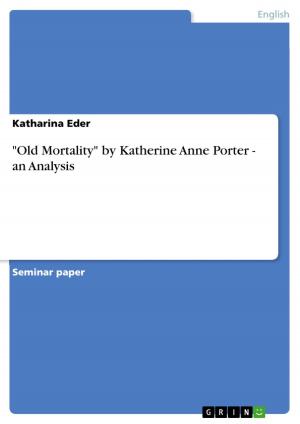Relevance of income as one of the poverty indicators in Latin America
Business & Finance, Economics, Urban & Regional| Author: | Piotr Grudzinski | ISBN: | 9783638530217 |
| Publisher: | GRIN Publishing | Publication: | August 4, 2006 |
| Imprint: | GRIN Publishing | Language: | English |
| Author: | Piotr Grudzinski |
| ISBN: | 9783638530217 |
| Publisher: | GRIN Publishing |
| Publication: | August 4, 2006 |
| Imprint: | GRIN Publishing |
| Language: | English |
Seminar paper from the year 2006 in the subject Economics - Case Scenarios, grade: 2,3, Furtwangen University, course: Latin American Economy, 10 entries in the bibliography, language: English, abstract: Poverty has been and is a main issue in most countries, in particular in Latin America. Antipoverty efforts have increasing priority among socio-political objectives. Both internally in so-called 'poor countries' themselves, as internationally within organizations involved in anti-poverty policies. As a consequence both groups have to define what is poverty, how to measure it? What are the best indicators of poverty? Which statistics must be used to draw a clear picture and conclusions? This is a very complex process, as it touches both tangible and less tangible indicators. Income/Consumption Method, Household income distribution, Household Expenditures, Headcount Ratio, etc. are keywords rather for the mere economic aspect. Income/Consumption distribution has the widest use as a poverty marker. The other methods focus on social inequalities like: access to social institutions, social security, differences in social legitimacy and status, inequalities of freedom and social and political participation. Focus and Layout Having the widest use due to its tangibility and measurability, income/consumption is not a perfect and only poverty indicator. Most analyses of poverty in Latin America refer to income inequality, as other perceptions i.e. due to social exclusion and impossibility of certain populations accessing key social services, etc, constitute a large part of the story about poverty in Latin America. On the following pages, significant impact will be put on poverty markers that are sometimes treated as less important. This paper will present a framework of aspects that make the poverty in Latin America a lingering, persevering state. The relevance of the income distribution in comparison with other poverty indicators across Latin America will be shown. In other words, to which extent can poverty in Latin America be explained by inequalities of income distribution and to which by other dimensions. Firstly as the 'non plus ultra', the ECLAC approach to poverty measurement will be shown. Later, for the paper purposes, a distinction between the 'economic poverty indicators' and 'sociopolitical poverty indicators' will be made. Country classification will be presented accordingly. Countries of Brazil and Peru will be taken as examples. Further on scope and importance of both poverty dimensions will be assessed. Finally a summary and conclusions sections will complete the paper. [...]
Seminar paper from the year 2006 in the subject Economics - Case Scenarios, grade: 2,3, Furtwangen University, course: Latin American Economy, 10 entries in the bibliography, language: English, abstract: Poverty has been and is a main issue in most countries, in particular in Latin America. Antipoverty efforts have increasing priority among socio-political objectives. Both internally in so-called 'poor countries' themselves, as internationally within organizations involved in anti-poverty policies. As a consequence both groups have to define what is poverty, how to measure it? What are the best indicators of poverty? Which statistics must be used to draw a clear picture and conclusions? This is a very complex process, as it touches both tangible and less tangible indicators. Income/Consumption Method, Household income distribution, Household Expenditures, Headcount Ratio, etc. are keywords rather for the mere economic aspect. Income/Consumption distribution has the widest use as a poverty marker. The other methods focus on social inequalities like: access to social institutions, social security, differences in social legitimacy and status, inequalities of freedom and social and political participation. Focus and Layout Having the widest use due to its tangibility and measurability, income/consumption is not a perfect and only poverty indicator. Most analyses of poverty in Latin America refer to income inequality, as other perceptions i.e. due to social exclusion and impossibility of certain populations accessing key social services, etc, constitute a large part of the story about poverty in Latin America. On the following pages, significant impact will be put on poverty markers that are sometimes treated as less important. This paper will present a framework of aspects that make the poverty in Latin America a lingering, persevering state. The relevance of the income distribution in comparison with other poverty indicators across Latin America will be shown. In other words, to which extent can poverty in Latin America be explained by inequalities of income distribution and to which by other dimensions. Firstly as the 'non plus ultra', the ECLAC approach to poverty measurement will be shown. Later, for the paper purposes, a distinction between the 'economic poverty indicators' and 'sociopolitical poverty indicators' will be made. Country classification will be presented accordingly. Countries of Brazil and Peru will be taken as examples. Further on scope and importance of both poverty dimensions will be assessed. Finally a summary and conclusions sections will complete the paper. [...]















